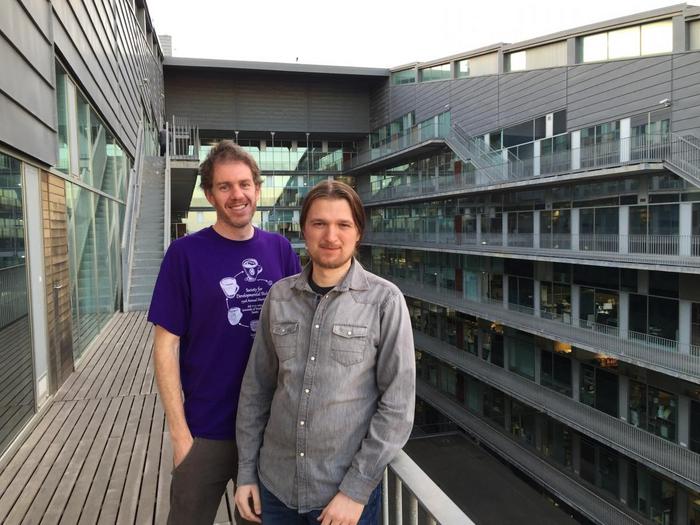A computational model built by researchers at the Institute of Research in Biomedicine (IRB Barcelona) and the Centre for Genomic Regulation (CRG) can predict which drugs will be most effective in treating diseases caused by mutations that can bring protein synthesis to a halt, resulting in unfinished proteins.

Credit: Centre for Genomic Regulation
A computational model built by researchers at the Institute of Research in Biomedicine (IRB Barcelona) and the Centre for Genomic Regulation (CRG) can predict which drugs will be most effective in treating diseases caused by mutations that can bring protein synthesis to a halt, resulting in unfinished proteins.
The findings, published today in Nature Genetics, mark an important step in helping personalise treatment by matching patients with specific mutations with the most promising drug candidate. The predictive model, a publicly available resource called RTDetective, can accelerate the design, development, and efficacy of clinical trials for many different types of genetic disorders and cancers.
Truncated proteins are the result of protein synthesis coming to a sudden halt. In our bodies, this is caused by the appearance of ‘nonsense mutations’ which act like a stop sign or roadblock, causing cellular machinery to suddenly hit the brakes. In many cases, these unfinished proteins stop working and cause disease.
The presence of these stop signs underlies up to one in five single-gene disorders, including some types of cystic fibrosis and Duchenne muscular dystrophy. They also often appear in tumour suppressor genes, which normally help control cell growth. Stop signs inactivate these genes and are a major cause of cancer.
Diseases emerging from truncated proteins can be targeted with nonsense suppression therapies, drugs which help cells ignore or “read through” the stop signs that appear during protein production. Cells with higher readthrough rates will make more full-length, or near full-length, proteins.
The study demonstrates that, to date, clinical trials of nonsense suppression therapies are likely to have used ineffective patient-drug combinations. This is because the effectiveness of drugs in promoting readthrough depends not just on the nonsense mutation, but also on the genetic code immediately surrounding it.
The researchers made the discovery after studying 5,800 disease-causing premature stop signs and testing the efficacy of eight different drugs on each of them. The data is derived from patient reports submitted to freely accessible public archives like ClinVar, as well as from research projects like The Cancer Genome Atlas (TCGA), which collected and analysed genetic information from thousands of cancer and genetic disease patients, including premature stop codons.
They found that a drug that works well for one premature stop sign may not be effective for another, even within the same gene, because of the local sequence context around the premature stop sign. “Think of DNA sequence as a road, with a stop mutation appearing as a roadblock. We show that navigating through this obstacle depends heavily on the immediate surroundings. Some mutations are surrounded by well-marked detour routes while others are full of potholes or dead ends. This is what marks a drug’s ability to bypass obstacles and work effectively,” explains Ignasi Toledano, first author of the study and joint PhD student at IRB Barcelona and the Centre for Genomic Regulation.
The researchers generated a substantial amount of data by testing many different combinations of drugs on bypassing the stop signs, resulting in a total of over 140,000 individual measurements. The data was large enough to train accurate predictive models, which they used to create RTDetective.
The researchers used the algorithm to predict the effectiveness of different drugs for every one of the 32.7 million possible stop signs that can be generated in RNA transcripts in the human genome. At least one of the six drugs tested was predicted to achieve more than 1% readthrough in 87.3% of all possible stop signs, and 2% readthrough for nearly 40% of cases.
The results are promising because higher readthrough percentages generally correlate with better therapeutic outcomes. For example, Hurler syndrome is a severe genetic disorder caused by a nonsense mutation in the IDUA gene. Previous studies have shown that, with just 0.5% readthrough, individuals can partially mitigate the severity of the disease by creating very small amounts of functional protein. RTDetective predicted that readthrough above this threshold can be achieved by at least one of the drugs.
“Imagine a patient is diagnosed with a genetic disorder. The exact mutation is identified through genetic testing and then a computer model suggests which drug is the best to use. This informed decision-making is the promise of personalised medicine we hope to unlock in the future,” explains ICREA Research Professor Ben Lehner, one of the main authors of the study and Group Leader at the Centre for Genomic Regulation in Barcelona and the Wellcome Sanger Institute in the UK.
The study also suggests how new drugs can be quickly given to the correct patients. “When a new readthrough drug is discovered, we can use this approach to rapidly build a model for it and to identify all the patients that are most likely to benefit,” adds Professor Lehner.
The researchers next plan on confirming the functionality of proteins produced via readthrough drugs, a crucial step in validating their clinical applicability. The team also plans to explore other strategies that can be used in combination with nonsense suppression therapies to further the effectiveness of treatments, particularly in cancer.
“Our study not only opens new avenues for treatment of heritable genetic diseases, for which readthrough agents were trialled before, but also importantly for treatment of tumours, since the majority of cancers have mutations causing premature termination of proteins,” concludes ICREA Research Professor Fran Supek at IRB Barcelona, one of the main authors of the study.
Journal
Nature Genetics
Method of Research
Data/statistical analysis
Subject of Research
People



